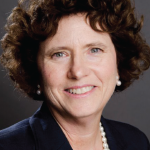What attracts physicians to a career in rheumatology? Traditionally, the foundation of clinical training at both the medical student and house staff level is based on inpatient services. There are many reasons for this, predominantly revolving around access to patients available for teaching. The result: Trainees are predominantly exposed to a group of conditions that either provide an answer or run their course in a period of two weeks. One becomes an expert in the diagnosis and immediate management of conditions associated with hypoxia, sepsis, hypotension, etc. These dysfunctions are also frequently remedied or diagnosed over the short term and provide immediate positive feedback to physicians in training.
Chronic disorders, such as diabetes mellitus, chronic obstructive pulmonary disease and rheumatoid arthritis, are best understood when followed over a prolonged period of time in the ambulatory arena, a site that has always been difficult to incorporate into educational programs at all levels. The formation of long-term relationships with a patient and the opportunity to observe both spontaneous fluctuations in a disease and the delayed response to intervention is seldom experienced by trainees. This is unfortunate because so much of the unique challenge and joy in medicine occurs in caring for patients with these conditions.
Involvement in providing long-term care teaches one not only about the disease, but also about the person with the disease. How do they function despite it all? How do they deal with their multiple challenges? Caring for such patients will have periods of adversity and frustration, but also times of celebration. Misdirections and blind alleys will often occur. Early in my career I became aware that, often, the most grateful patients were not those who were doing well by the usual objective criteria, but those who appreciated my continued effort and concern. One realizes that style points are often awarded, especially in the field of rheumatology.
A Single Patient
Sometimes an experience with an individual patient may alter your career decisions. In the era in which I was a house officer, interns—particularly in a city hospital—were responsible for starting intravenous (IV) drips and drawing blood. This duty was not without its benefits, although they were not always appreciated at the time. Not only did this encourage more selectivity about what labs to obtain, but it also strengthened a trusting patient relationship, often more dependent on phlebotomy skills and effective personal interaction than a knowledge of medicine. It provided an interval of time in which you were totally committed to your patient.
One of my patients at that time was a lovely, resourceful woman in her 70s. She had longstanding, crippling rheumatoid arthritis and had been admitted for leg ulcers. My daily rounds were not just a perfunctory glance at the wounds, but a longer stay in which I dressed the wounds and attended to drawing blood and maintaining IV fluid access. During these visits we had discussions in which she taught me what it was like to live with a chronic disabling disease.
Similar to most young physicians in training at that time, I had been drawn to the excitement and immediate rewards associated with acute, potentially reversible illnesses. This experience provided me with insights into the challenges of a chronic disease that would not have been available without this period of time spent with this patient. I remember her and what she taught me to this day—not in small part because she spent her days knitting a sweater for my newborn daughter.
Time spent just talking to patients fosters the development of empathy and can expand your horizons in multiple ways that may not be apparent to you at the time.
When I made my decision to become a rheumatologist in the mid-1960s, only three areas had internal medicine subspecialty boards: cardiology, pulmonology and gastroenterology. I was never convinced those subspecialties with boards did any better with teaching, research or patient care than those without boards. Medical residency in that era focused on the training of general internists and lasted for three years after internship. Many who chose to subspecialize in a discipline without subspecialty boards would spend 6–12 months of their final year of residency in the chosen discipline and enter practice as an internist with a particular interest in a given field, such as rheumatology, endocrinology or hematology. Physicians took a formal fellowship—as I did—only because of a desire to work in an academic medical center. My two years as a fellow were predominantly laboratory based, which was the custom at that time.
I was drawn to rheumatology because I was attracted by the challenge of the many systemic and essentially untreatable aspects of rheumatological conditions and encouraged by the relationships I had formed with such patients during my internship and residency. I was particularly intrigued by conditions that did not have an easy cure and was convinced patients who could not be cured needed a physician as much as, or more than, those who could be easily cured.
The dependence on history and physical exam, plus the ability to use these readily available modalities to make decisions and separate the walking wounded from the worried well also strongly affected my decision. In addition, I was convinced that significant advances would be made in the treatment of these disorders during my career.
During my residency I also decided I wanted to function as a clinician and teacher in an academic medical center. To be effective in this role, I was of the opinion that it was essential to be challenged on a regular basis by caring for patients with whom I had a personal relationship. Although I loved the immediate gratification of intervening in the conditions of patients with acute illnesses, I realized that, as an attending on such a service, the house staff would have all of the fun and my role would be to pontificate on Monday morning about what had happened the night before. I felt a predominantly ambulatory practice focused on difficult rheumatologic diseases would allow me to savor the joys of being a physician while also being actively involved in clinical teaching.
Choosing rheumatology was a good decision, and in many areas, my vision became a reality. The development of effective orthopedic interventions in the 1970s, the addition of methotrexate as the cornerstone of medical therapy in the 1980s and the arrival of several biological agents starting in the 1990s have tremendously affected the course of many conditions seen in the practice of rheumatology. Waiting rooms in the 1960s were filled with patients using assistive devices, wheelchairs and—not infrequently—stretchers, all of which have become a thing of the past.

